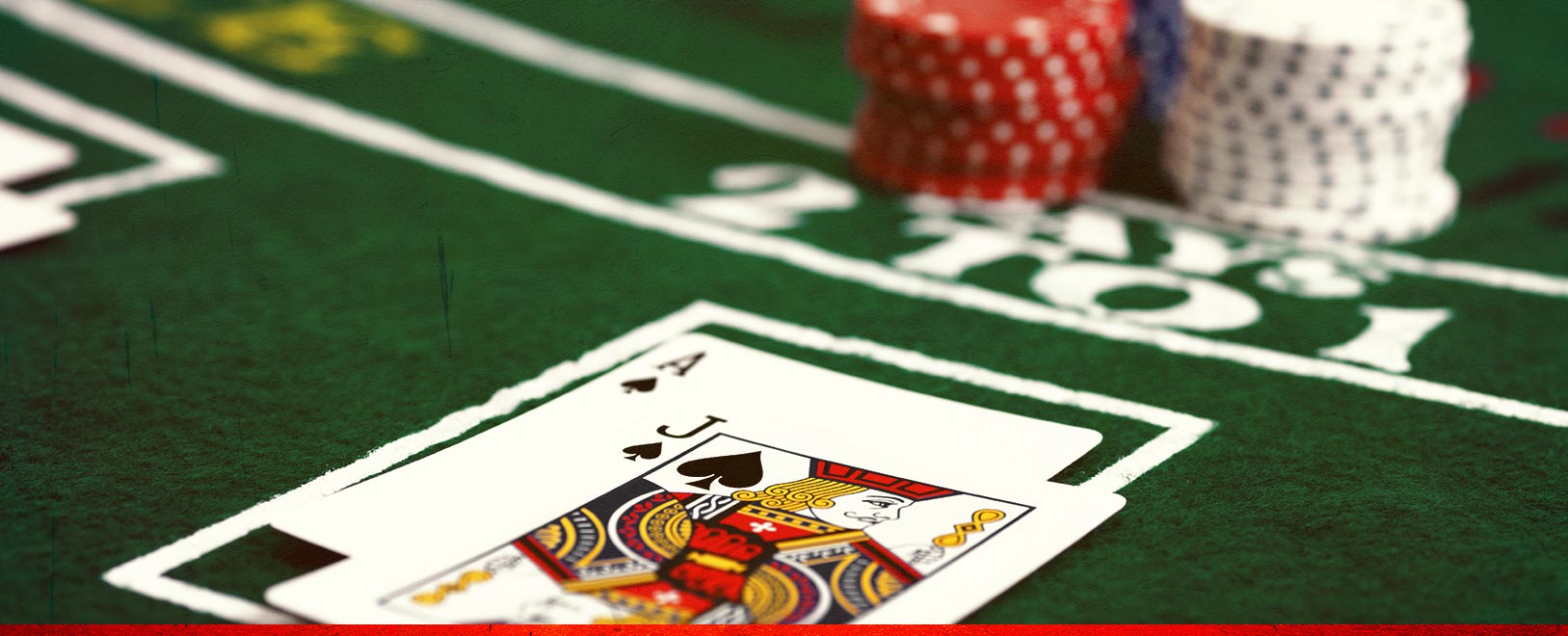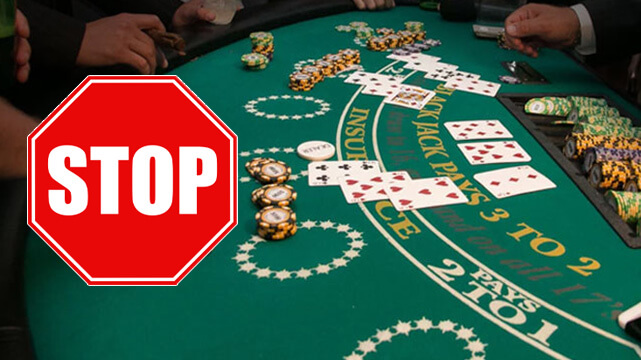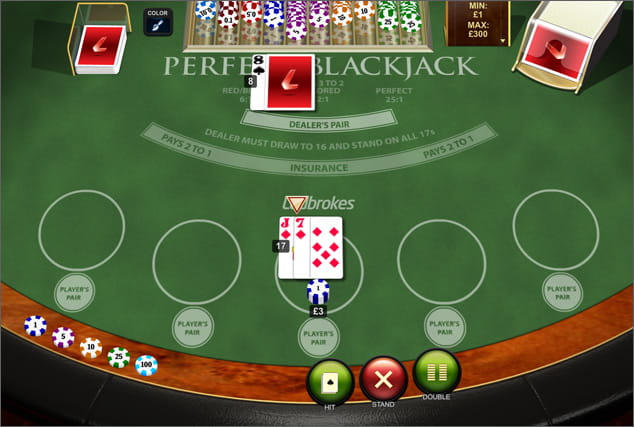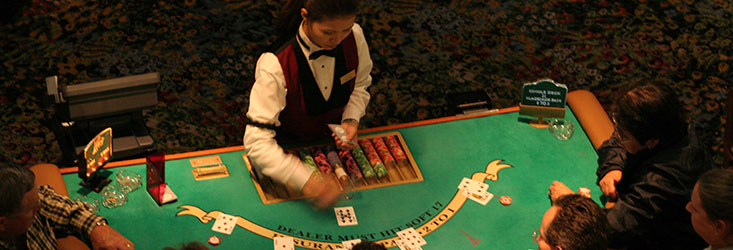What Does A Blackjack Dealer Have To Hit On
Blackjack is one of the very few casino-banked card games where the decisions players make have a direct impact on their long-term chances of winning and preserving their bankrolls. Whether you make the correct plays or not will ultimately determine whether you emerge as a long-term winner or loser.
When you join a blackjack table, the two most fundamental playing decisions you are facing are whether to hit or stand on your hand. Ironically, these two decisions rank last in the order of plays you can exercise at the blackjack table.
The dealer will bust more often with certain up cards than with others. Take a look at the chart below. You will see that the worst cards for the dealer are the 5 and 6, followed closely by the 4. When the dealer is showing a 5 or a 6, they have a 42 percent chance of busting and a 40 percent chance when they have a 4 showing. The players then have the option to hit, which means taking another card, or stand, which means refraining from taking another card and keep their score as is. The blackjack dealer then takes cards himself or stands according to specific predefined rules depending on the numerical value his cards add up to.
The reason for this is simple – unlike surrendering, splitting, and doubling, you can hit or stand on hands that comprise any number of cards whereas the other moves are possible only on two-card totals. Both plays are accompanied by specific hand gestures which differ depending on whether you join a shoe-dealt table or a pitch game.
The great thing about blackjack is that the game combines elements of luck, skill, and strategy. There is no need to rely on gut feelings in order to make the correct move. All you have to do is memorize basic blackjack strategy. It gives you the foundation of becoming a successful blackjack player by telling you when to hit your hand and when to stand.
Hitting a Hand in Blackjack
A new round at the blackjack table starts with everyone receiving two cards that comprise their starting hands. This includes the dealer who normally receives their first card up while their second card is dealt face-down. The players would either receive their two cards face-up in shoe-dealt blackjack or face-down in pitch games where only one or two decks are in play.

At this point, each player takes a good look at their initial two-card hand, checks the dealer’s exposed card, and decides whether to take a hit or not. Hitting is the first most common decision one makes at the blackjack table. It involves the player requesting additional cards on their initial hand.
In multiple-deck games dealt out of a shoe, the player indicates they want to hit either with a beckoning gesture with their finger or by tapping the felt next to their two cards. In pitch games where you receive your cards face down, a hit is indicated by lightly scraping the felt with your two cards.
Players are allowed to take as many hits as they like unless the last card drawn to their hand causes it to break, i.e. go over 21. You can hit any total, with the exception of pat blackjacks which automatically stand.
The main reason for drawing additional cards is to try and improve the value of your hand. Your hitting decisions are influenced by two factors – the current total of your hand and the upcard the dealer is showing.

Standing on a Hand in Blackjack
Standing on a hand is practically the opposite of hitting. The player is satisfied with their current hand value and declines additional cards from the dealer. Similarly to hitting, this decision must be designated with a physical gesture for the purpose of hindering cheaters and preventing misunderstandings on behalf of the dealer and surveillance.
This physical motion involves waving your palm horizontally over your two cards in shoe-dealt games. The gesture is different in single-deck and double-deck games where standing is indicated by sliding the corners of your cards under the chips you have originally placed in your betting box.

Forced Standing Rules for Dealers and Their Variations
Unlike blackjack players, the house representative who deals the cards does not make any decisions when playing out their hand. Instead, blackjack dealers draw cards or stand on their hands according to the forced rules specified by the gambling establishments.
These forced dealer rules vary depending on the gambling hall and the blackjack table you play at, but are generally classified into two main groups. The dealer is either required to draw to 16 and force-stand on all totals of 17 or must draw to 16, stand on hard 17 and hit soft 17. The dealer standing rule is printed on the layout, which makes it easy for players to distinguish what table they are playing.
Which of the two dealer rules is better from the perspective of the player, though? To answer this question, we must first explain what a soft 17 is. This is a hand that contains an Ace whose value is flexible, i.e. it can be either 1 or 11, like in the following two examples – A-6 and A-2-4. Due to the fluctuating value of the Ace, one such soft hand practically has two totals, 7 and 17.
What Do Blackjack Dealers Have To Hit On
The dealer forced standing rules should be always taken into consideration because they have a direct impact on basic strategy as well as on the house edge. A total of 17 is not strong enough in blackjack where the average winning hand totals 18.5. A dealer who hits soft 17 is less susceptible to exceeding 21 and thus, losing because of the flexible value of the Ace.
If a higher-ranking card is drawn, the dealer’s Ace will count as 1. This practically makes it impossible for them to bust by taking one more card. However, if they happen to catch a small card like a deuce on the next hit, it gets them into the safe zone and they can outdraw the player, who always stands on hard 17 according to basic strategy.
A dealer who hits soft 17 (H17) increases the house edge by 0.22%. This may seem like a small increase in the casino’s advantage but nevertheless, it leads to higher hourly losses in the long term for the basic strategy player.
Assuming you play at a full table where you flat bet at the minimum of $5 and go through 60 hands per hour on average, you will lose roughly ($5 x 60 x 0.22)/100 = $0.66 per hour due to the soft 17 rule alone.
Of course, these figures apply only over the long run where thousands of hands are involved. Nevertheless, a smart blackjack player always favors tables where the dealer stands on all 17 over those where they hit soft 17.

Key Basic Strategy Plays for Hitting and Standing
Basic strategy tells blackjack players when it is the correct time to hit and when they should stand, among other things. The decision is based on the upcard of the dealer and the player’s hand total. Basic strategy is proven to reduce the house edge, but some of the hitting and standing decisions it suggests also aim at minimizing the long-term losses players incur in unfavorable situations. With that said, you cannot overcome the house edge entirely with basic strategy alone.
The correct plays are influenced by a variety of factors which include the above-mentioned dealer forced rules, the number of decks incorporated into the game, and the possible rule variations at different blackjack tables.
The strategy is normally presented in a table format. Here are several of the most important standing and hitting decisions recommended by basic strategy for multiple-deck games where the dealer force-stands on all 17s:
- Always hit totals 4 through 8 regardless of what card the dealer shows
- Stand on hard totals of 12 if the dealer exposes small cards 4 through 6 and hit your hard 12 against all other dealer cards
- Hit 16 against a dealer with a ten-value card or Ace, otherwise surrender if allowed
- Always hit soft totals 13 through 17 and stand on soft 19
- Stand on soft totals of 18 unless the dealer is showing high cards like 9, 10, and Ace. If so, hit your soft 18.
- Stand on all hard totals of 17 or higher
Deviations from Basic-Strategy Hitting and Standing Decisions
Learning basic strategy is an absolute must for anyone who insists on becoming a winning blackjack player. With that said, basic strategy relies on limited information. It tells you the optimal plays you can make in any given situation after you have received your first two cards and have seen the dealer’s exposed card.
However, it does not take into account the way the composition of the deck or shoe changes as more and more cards are removed from play. These changes in composition are important because they have a direct impact on the house edge.
If more ten-value cards and Aces remain to be dealt, the edge swings over in favor of the player and vice versa, the dealer has an advantage when the remaining shoe or deck is richer in small cards. Smart players have learned to exploit this peculiarity of the game by keeping track of the ratio of high to low cards that remain to be dealt.
This is known as card counting. The player keeps a running count as each card is dealt out of the shoe and then converts it into a true count. This conversion is necessary for shoe games and involves the division of the current running count by the number of decks that remain in play.
A high positive true count indicates the shoe is rich in high cards and vice versa, a negative true count means more small cards are still in play. Using this information, well-versed players would deviate from basic strategy for certain hitting and standing decisions. The plays suggested by the strategy are based on a neutral deck or shoe and are no longer optimal after the composition changes.
A Couple of Examples for Hitting and Standing Deviations

Blackjack pros resort to using indices for their playing deviations. An index is a number that tells you at what true count you must diverge from the basic strategy. Let’s use hard 12 against a dealer with a deuce as an example just to give you a better idea of how playing deviations for hitting and standing work.
A basic strategy chart for multiple-deck games under the S17 rule recommends you to hit your 12 against a 2. However, this play is no longer optimal once you arrive at a true count of +3. Now, there are more tens and face cards you can bust with. Therefore, you must deviate from basic strategy and stand on your 12 against the 2 when the true count is +3 or higher.
Another example is a hand of hard 16 against a dealer with a 9 as their upcard. According to basic strategy, you must hit your hard 16 against the 9 if surrender is unavailable. Unfortunately, this decision is a bad one on high positive counts of +5 or above. Respectively, the player stands (the pun was unintentional) better chances of winning if they refrain from drawing more cards because hitting is more likely to break their 16 in shoes that are rich in tens.
And one final example with a hard 13 versus a dealer showing a 3, in which case you should stand according to basic strategy. This may be a good idea in a neutral shoe but it becomes unprofitable on negative counts.
The index for this hand is -2, which is to say you deviate from basic strategy when the true count drops to -2 or lower by choosing to hit instead of standing. At this point, there are more small cards than high cards to help you improve your hand and minimize the risk of breaking it.
Playing deviations are great not only for hitting and standing but for all other possible moves in blackjack, like doubling, splitting, surrendering, and buying insurance. Not only do these deviations enable the player to generate more EV in the long term but they also reduce risk and help you tame variance.
What Does A Blackjack Dealer Have To Hit On Slot Machines
With that said, it is impossible to use them without committing basic strategy to memory first, so we suggest this is where you start if you take your blackjack game seriously.
A blackjack dealer is an individual who works in a casino and who deals the cards for blackjack. Blackjack is a table game in which players aim to reach as close to 21 as possible without going over. The object for players is to either have a higher number than the dealer and/or for the dealer to go over 21 so the players will win their hands.
Generally, blackjack is played in locations where gambling is legal. This occurs within the United States in Atlantic City, New Jersey, Las Vegas Nevada, and on Indian reservations. Some casinos are also on riverboats off-shore. Other countries also have various rules on the legality of gambling; in Monte Carlo for example, gambling is legal as well as in some parts of Canada and in certain clubs and areas in England. Many cruise ships and Caribbean islands also offer blackjack play.
A blackjack dealer may work in any of these environments in which gambling is legal and in which people come to play table games. A dealer generally must be licensed or authorized to deal blackjack. This is usually done by a gaming commission or some other related body, or by the casino who hires him. The certification usually requires a background check in which the dealer is fingerprinted and it is determined whether the dealer has any criminal convictions that would preclude him from being trustworthy as a blackjack dealer.
Once the dealer has been hired, he has several primary duties. First, he must change money for customers. This involves being able to quickly count money and trade it in for chips used to bet at the table. The dealer may also be required to know how to spot counterfeit money so he can identify such bills if the individual tries to trade them in for chips.
The dealer also shuffles cards or places them in an automatic shuffler. Many casinos have dealers using six decks combined to deal the blackjack hands from. The dealer must ensure the decks are all adequately shuffled.
What Does A Blackjack Dealer Have To Hit On
He must then deal cards to the players at the table. This involves placing two cards in front of each player and taking two cards himself, one face up and the other face down. The players then have the option to hit, which means taking another card, or stand, which means refraining from taking another card and keep their score as is. The blackjack dealer then takes cards himself or stands according to specific predefined rules depending on the numerical value his cards add up to. Finally, the blackjack dealer pays individuals who have won the hand.